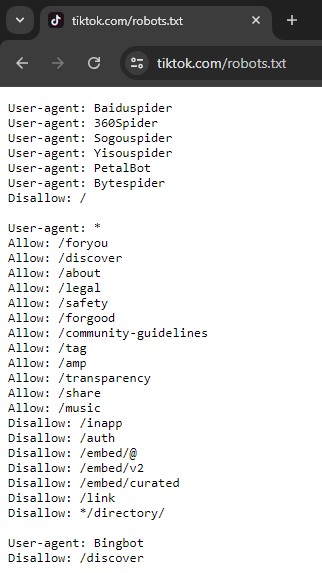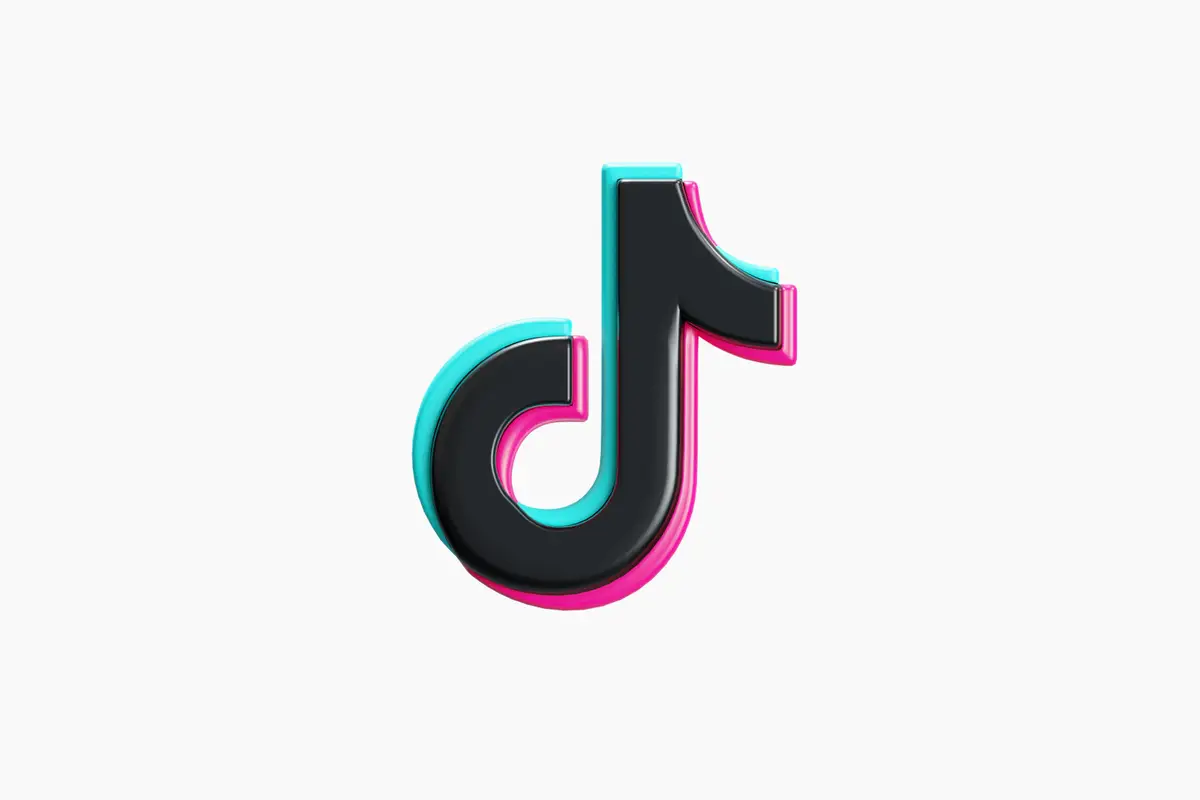TikTok has over 1.5 billion monthly active users, surpassing X (Twitter), Snapchat, and Pinterest. This growing popularity has attracted more celebrities, influencers, brands, and researchers to the platform.
The platform now holds a huge database that can guide business decisions, content creation, and understanding of TikTok user psychology.
These insights can make a huge difference for marketers, researchers, analysts, and content creators. And that’s where a TikTok scraper comes in handy.
Although there are a lot of TikTok scrapers, you need to rely on ones that ethically source data and follow TikTok’s guidelines.
To help you save time on this research, our team of data experts has reviewed every TikTok scraper and compiled a list of the 5 best ones (plus instructions on how to use them).
Let’s dive in.
What is a TikTok Scraper?
A TikTok scraper is a software that extracts data from TikTok’s public and private profiles.
Besides software, TikTok scraping can be offered as a service and the scraped data can include current trends, demographics, hashtags, engagement metrics, etc.
The data is often used for trend identification, user research, finding influencers, or competitor analysis.
Why Scrape TikTok Data?
With the number of users on TikTok, there’s a lot of social interaction on the platform. By scraping this data, you can dig deep into:
- Market research: Marketers and researchers may scrape TikTok data to understand user demographics, behavior, and preferences. For example, how millennials interact with content on TikTok.
- Trend analysis: Trends on TikTok change fast. Scraping TikTok data can help brands create effective campaigns by capturing these trend changes and their impact.
- Competitor analysis: Brands can scrape data to find out competitor’s best-performing content, strategies, audience demographics and reactions, and engagement rates.
- Discover content strategies: Content creators can monitor trends, track competitors, and gather data on popular videos to enhance their own content strategies.
- Discover influencers: By scraping TikTok data, you can find influencers in your niche with an audience that aligns with yours.
- Research and studies: Researchers and academics scrape TikTok data to study social phenomena, behavior patterns, or the impact of certain types of content on the platform’s users.
The Ethical and Legal Considerations
Scraping publicly available data on TikTok is legal, as long as it complies with the rules and regulations of TikTok’s policy and relevant privacy laws.
Here are some things you must keep in mind so you don’t violate any laws:
- Review TikTok’s terms of service before scraping any data from the platform
- Make sure the purpose of your data collection is ethical.
- Websites have a robots.txt file that contains information about the scraped website’s permissions. Enter “https://www.tiktok.com/robots.txt” to view this.

- Avoid collecting personally identifiable information. Comply with laws regulating this, such as the CCPA in California and the GDPR in the EU.
- Keep copyrights in mind. Using or reusing TikTok user’s content in any form may violate their rights.
You can even seek the advice of a legal expert to determine what is permissibly legal to scrape.
4 Types of TikTok data you can scrape
While your purpose and method of scraping TikTok data determine whether it’s legal, here are three types of publicly available data that are generally safe to scrape.
- Public profile data: This includes information that TikTok users publicly share, like username, profile picture, bio, follower and following count, profile links, etc.
- Publicly shared videos: You can scrape data on videos that are public, like, video URLs, description, hashtags, engagement metrics, upload date, duration, sound, etc.
- Trend data: Data can be scraped about trending hashtags, trending sounds, and trending challenges.
- Hashtag data: You can scrape specific hashtag data, like name, number of videos using that hashtag, top videos under that hashtag, and information on whether the hashtag is currently trending.
Type of data that is considered illegal or unethical to scrape
- Personal private data: This includes information about private profiles, financial information, and personal identifiable information (PII) like email addresses, phone numbers, home addresses, etc.
- Data protected by law: In compliance with COPPA (Children’s Online Privacy Protection Act), information from users under the age of 13 or health-related data is protected by laws.
- Copyrighted content: Using or repurposing audio or video content that is protected by copyrights
- Data behind access controls: Data that require logins, special permissions, or other forms of access control should not be scraped.
Step-by-step guide to scraping TikTok
Here’s a process you can follow to scrape TikTok data like profiles, comments, or videos.
1. Setup your language and libraries
To set up your environment for web scraping, you’ll need to choose a programming language. Python is the most commonly chosen language because of its simplicity and the availability of powerful libraries.
Next, install web scraping libraries, like, ‘requests,’ ‘BeautifulSoup,’ ‘Selenium,’ ‘Scrapy,’ and ‘pandas’.
pip install requests beautifulsoup4 selenium scrapy pandas
2. Identify the data you want to scrape
Determine what you need to scrape. For example, do you wish to scrape TikTok trending posts or certain user profiles? You can even opt to scrape multiple things for your research or marketing purposes.
Make sure this aligns with the ethical and legal considerations we discussed above.
3. Scrape static content
Scraping static content involves fetching and parsing HTML from web pages where the content is already available in the source code. This means information like profile details and video metadata. For this, you can use libraries like ‘requests’ and ‘BeautifulSoup.’
Here’s an example for scraping profile data.
import requests
from bs4 import BeautifulSoup
def scrape_profile(username):
url = f”https://www.tiktok.com/@{username}”
headers = {‘User-Agent’: ‘Mozilla/5.0’}
response = requests.get(url, headers=headers)
soup = BeautifulSoup(response.text, ‘html.parser’)
profile_data = {}
profile_data[‘username’] = username
profile_data[‘followers’] = soup.find(‘span’, {‘title’: ‘Followers’}).text
profile_data[‘following’] = soup.find(‘span’, {‘title’: ‘Following’}).text
profile_data[‘likes’] = soup.find(‘span’, {‘title’: ‘Likes’}).text
profile_data[‘bio’] = soup.find(‘h2’, {‘class’: ‘share-desc’}).text
return profile_data
profile = scrape_profile(‘example_username’)
print(profile)
4. Scrape dynamic content
Scraping dynamic content involves web pages that load data asynchronously using JavaScript. For example, content such as comments or real-time data. You can use the library ‘Selenium’ to automate browser interactions.
Here’s a code example to scrape TikTok comments.
from selenium import webdriver
from selenium.webdriver.common.by import By
import time
def scrape_comments(video_url):
driver = webdriver.Chrome()
driver.get(video_url)
time.sleep(5) # Wait for the page to load
comments = []
comment_elements = driver.find_elements(By.CLASS_NAME, ‘comment’)
for element in comment_elements:
comment = {}
comment[‘username’] = element.find_element(By.CLASS_NAME, ‘username’).text
comment[‘text’] = element.find_element(By.CLASS_NAME, ‘text’).text
comment[‘likes’] = element.find_element(By.CLASS_NAME, ‘likes’).text
comments.append(comment)
driver.quit()
return comments
comments = scrape_comments(‘https://www.tiktok.com/@example_user/video/1234567890’)
print(comments)
5. Handle pagination and load more content
On social media platforms like TikTok, not all content is loaded at once. Content may be dynamically loaded or paginated by scrolling or clicking a “Load more” button.
Pagination involves navigating through multiple pages of content where each page typically has a unique URL or query parameter indicating the page number.
To scrape and extract all the data, you can use ‘Selenium.’
def load_more_comments(driver):
while True:
try:
load_more_button = driver.find_element(By.CLASS_NAME, ‘load-more-button’)
load_more_button.click()
time.sleep(3) # Wait for more comments to load
except Exception as e:
print(f”No more comments to load: {e}”)
break
def scrape_all_comments(video_url):
driver = webdriver.Chrome()
driver.get(video_url)
time.sleep(5)
load_more_comments(driver) # Load all comments before scraping
comments = scrape_comments(video_url) # Scrape loaded comments
driver.quit()
return comments
6. Store and analyze this data
Once you’ve scraped the data, you need to store it in a structured format for further analysis and usage. You can use common storage formats like CSV, JSON, and databases.
Here’s how you can save data in a CSV file.
import pandas as pd
def save_to_csv(data, filename):
df = pd.DataFrame(data)
df.to_csv(filename, index=False)
save_to_csv(comments, ‘comments.csv’)
5 Best TikTok Scrapers
The best TikTok scraper will depend on your goals and how you wish to scrape the data. Our data collection and analyst experts have spent considerable time researching the different TikTok scrapers available in the market.
Here’s our TikTok scraper, along with the 4 best ones they recommend.
1. influencers.club
If you are looking to find data on TikTok creators, influencers.club is the best choice. We have data on over 20M+ TikTok creators (with >1000 followers) along with their email addresses.
For all TikTok creators in our database, we also have social media profiles on other platforms. This way you can get a complete, detailed, and accurate picture of the creators’ overall online presence.
With 40+ data points (niche, location, keywords in bio, brand collaborations, etc.) for each TikTok profile in our platform, you can get a precise list of creators for your campaigns.
Lastly, you don’t need any technical knowledge to use our tool. We get your requirements, and our team prepares the data accordingly. This data is then sent in a CSV file so it’s ready to use.
How to use influencers.club?
- You can get in touch with us and share your criteria, and our team can find, filter, prepare, and send the data.
- Or you can use our dashboard to directly export TikTok data on creators:

Who is the tool best for?
- Businesses and marketers that need creators for their TikTok campaigns or who want to build long-term relationships with creators.
- Data analysts and researchers who need data on TikTok creators for their research or for understanding user psychology and preferences.
The only TikTok scraper designed for collecting creator data
Get in touch with our team and share your data requirements and goals. Our team will find, filter, prepare, and send you the data.
2. Apify
Apify is an advanced web scraping tool that offers a TikTok scraper. It allows users to extract a wide range of TikTok data from user profiles, hashtags, videos, etc. You can scrape all publicly available information like comments, posts, followers, number of shares, etc.
Results can be downloaded in multiple formats like JSON, HTML, CSV, Excel, or XML.
How to use Apify?
- Go to the Apify TikTok scraper page.
- Enter the required details and the scraping type (user, hashtag, trends, or music).
- Run the scraper and wait for the data to be extracted.
- Download your data.
Who is the tool best for?
The tool is best for researchers and marketers who are a little tech-savvy and need details on individual profiles, hashtags, videos, etc.
3. Smartproxy
Smartproxy provides a specialized social media scraping API. This allows you to scrape publicly available TikTok information like profiles, usernames, hashtags, posts, videos, music, etc.
They also have code samples on their GitHub page for the most popular programming languages and a Postman collection with an explanation for each line.
The scraper has an in-built parser, so you can fetch results in JSON format.
How to use Smartproxy?
- Download and set up the Smartproxy TikTok scraper tool from their GitHub repository or API documentation
- Specify the scraping parameters like usernames, hashtags, etc.
- Execute the scraper script, using your proxy settings to avoid IP blocks.
- Extract and save scraped data in a JSON or CSV format
Who is the tool best for?
Smartproxy is best for users who have technical knowledge and require limited data, as you don’t get data in batches with this tool.
4. ScraperAPI
ScraperAPI is a general-purpose scraping tool that allows you to scrape TikTok data. You only require the URL of the target page and an HTML response will be returned.
The tool is versatile, as it supports many programming languages, such as Python, Ruby, PHP, NodeJS, and Java.
They also use residential proxies so your activities can be kept anonymous.
How to use ScraperAPI?
- Register on ScraperAPI and get your API key.
- Integrate ScraperAPI with your scraping script by modifying the request URLs to use ScraperAPI’s endpoint, appending your API key.
- Define TikTok URLs and scraping parameters in your script.
- Make HTTP requests through ScraperAPI, which handles proxies, CAPTCHAs, and IP rotation.
- Parse the HTML response using tools like BeautifulSoup or Puppeteer.
- Store the extracted data in your preferred format.
Who is the tool best for?
ScraperAPI is best for developers and data scientists who need to gather large amounts of data without dealing with IP bans and CAPTCHAs. It can also be used by marketers looking to gather insights for their TikTok strategies.
5. ScrapeStorm
ScrapeStorm’s TikTok scraping tool automates data extraction from TikTok without coding. It offers an intuitive, visual interface to configure scraping tasks, allowing users to collect information like user profiles, video details, hashtags, comments, and engagement metrics.
The tool can also handle dynamic content and can deal with pagination and “load more” buttons.
ScrapeStorm also includes features for scheduling scrapes, exporting data in various formats (CSV, JSON, Excel), and integrating with databases.
How to use Scrapestorm?
- Download and install the ScrapeStorm application
- Open the application, create a new task, and enter the TikTok URL.
- Use the auto-detection feature to identify data fields like user profiles, video details, and comments.
- Refine the scraping rules, handle dynamic content, and configure pagination if needed.
- Start the task and export the scraped data in your preferred format (CSV, JSON, Excel).
Who is the tool best for?
ScrapeStorm is best for individuals without coding skills who need to extract data from TikTok. This includes marketers, creators, and researchers who wish to gather insights quickly and easily.
To Sum Up
Whether you are a marketer looking to find influencers for your next campaign or a creator who wants to optimize your content strategy, using a TikTok scraper can get you a lot of insights.
To decide which TikTok scraper to choose, consider your goals, budget, and need for technical know-how.
Lastly, always abide by the terms set by TikTok and the various privacy laws so you can access data without having to face legal repercussions.
FAQ
To protect TikTok creators’ privacy when scraping data, avoid collecting personal identifiers, respect content usage policies, anonymize data, use data ethically, and comply with TikTok’s terms of service and data protection laws, such as GDPR or CCPA.
The answer is it depends. If you use unauthorized or illegal methods to scrape data, your account can be banned or restricted. But if you use tools like influencers.club that adhere to privacy regulations and TikTok’s terms of service, scraping does not lead to your account getting banned.
Data extracted from TikTok can be used for marketing by analyzing trends, identifying popular content and influencers, understanding audience demographics and psychology, creating engaging campaigns, analyzing competitors, and measuring campaign effectiveness.
Using TikTok scrapers that respect the legal guidelines doesn’t have risks.
But, using illegal or unethical TikTok scrapers can risk violating TikTok’s terms of service, leading to account suspension or legal action.
Scrapers may also face technical challenges like IP blocks, CAPTCHAs, and data inaccuracies due to site changes or dynamic content, requiring frequent maintenance and updates.
Need TikTok data?
We have a database of 20M+ TikTok creators, plus a team of data experts who can collect, filter, and organize TikTok data per request.


